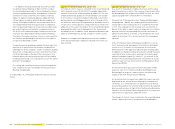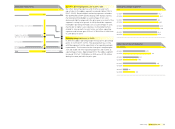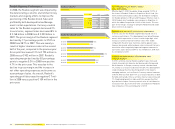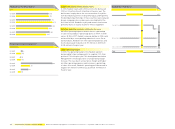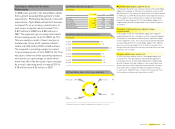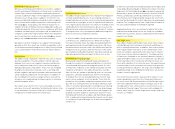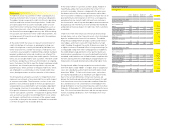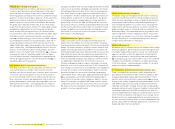Reebok 2008 Annual Report Download - page 112
Download and view the complete annual report
Please find page 112 of the 2008 Reebok annual report below. You can navigate through the pages in the report by either clicking on the pages listed below, or by using the keyword search tool below to find specific information within the annual report.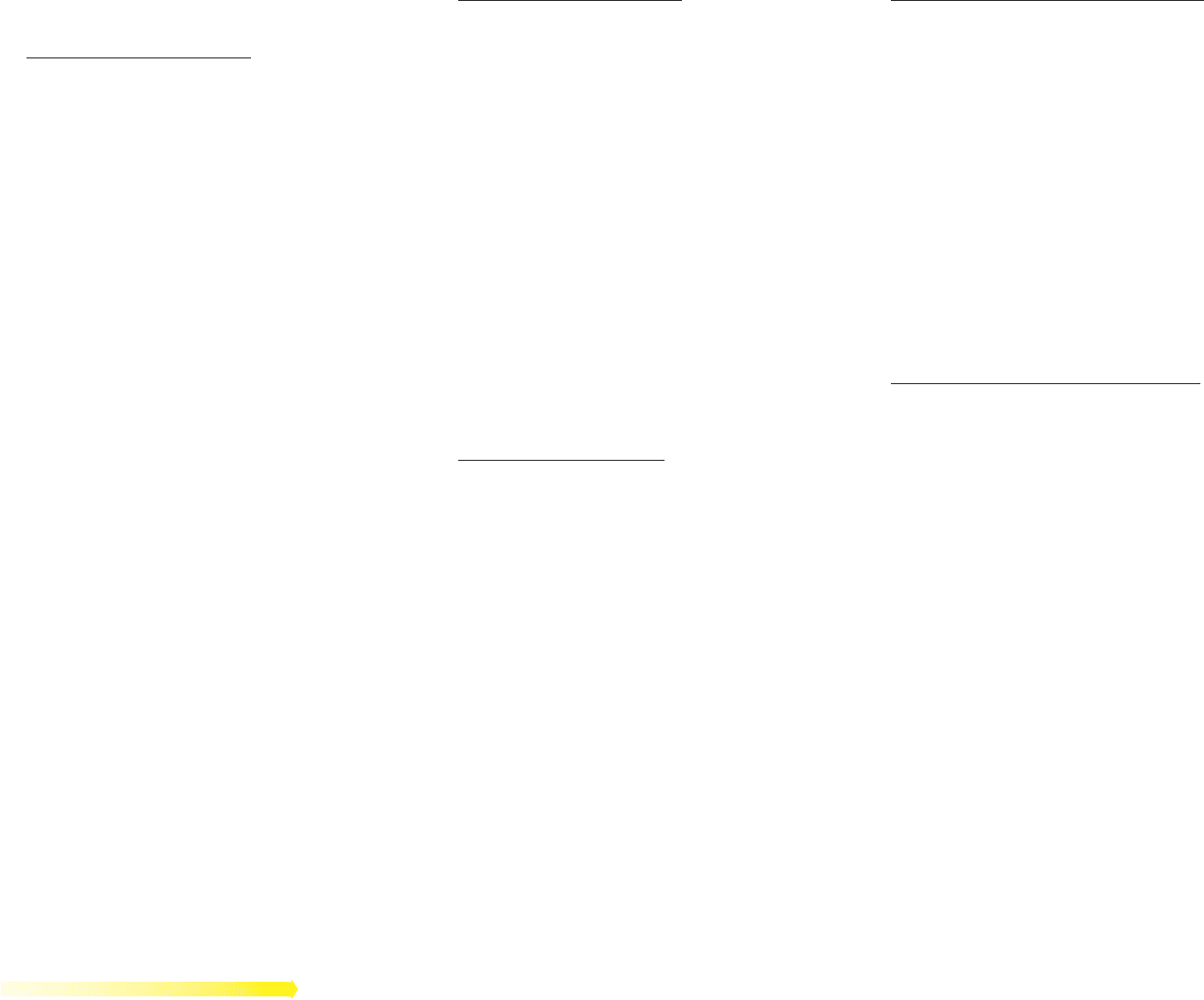
108 Group Management Report – Our Financial Year Risk and Opportunity Report
The main components of our risk and opportunity management
process are:
—
Risk and opportunity identifi cation: The adidas Group con-
tinuously monitors the macroeconomic environment, develop-
ments in the sporting goods industry, as well as internal pro-
cesses to identify risks and opportunities as early as possible.
Local and regional business units have primary responsibility
for the identifi cation and management of risk and opportu-
nities. Central risk management has defi ned a catalogue of
potential risks and opportunities for our Group to assist in
the identifi cation process. In addition to the potential fi nancial
impacts from changes in the overall macroeconomic, political
and social landscape, each business unit actively monitors
brand, distribution channel and price point developments in
our core sport, leisure lifestyle and sport fusion markets. A key
element of the identifi cation process is primary qualitative and
quantitative research such as trend scouting, consumer sur-
veys and feedback from our business partners and controlled
space network. These efforts are supported by global market
research and competitor analysis. Here, secondary material
such as NPD Sports Tracking Europe market research data
is analysed and global relationships with independent trend
and media agencies such as Trendwatching.com are main-
tained. Through this process we seek to identify the markets,
categories, consumer target groups and product styles which
show most potential for future growth at a local, regional and
global level. Equally, our analysis focuses on those areas that
are at risk of saturation, increased competition or changing
consumer tastes.
—
Risk and opportunity assessment: Identifi ed risks and
opportunities are assessed with respect to (1) occurrence
probability, and (2) potential contribution to loss or profi t,
with contribution being defi ned as operating profi t before
intra-Group royalties. The occurrence probability of indi-
vidual risks and opportunities is evaluated on a scale of 0 to
100% likelihood. In this report, we summarise these fi nd-
ings by utilising “high”, “medium” or “low” classifi cations to
represent an aggregate likelihood for various risk and oppor-
tunity cate gories. As risks and opportunities have different
characteristics, we have defi ned separate methodologies for
assessing the potential fi nancial impact. With respect to risks,
the extent of potential loss is measured on a case-by-case
basis as the contribution deviation from the most recent fore-
cast under the assumption that the risk fully materialises. This
calculation also refl ects the effects from risk- compensating
measures. In assessing the potential contribution from
opportunities, each opportunity is appraised with respect to
viability, commerciality, potential risks and the expected profi t
contribution. This approach is applied to longer-term strategic
prospects but also to shorter-term tactical and opportunistic
initiatives at both the Group and, more extensively, the brand
level.
—
Risk and opportunity treatment: Risks and opportunities
are treated in accordance with the Group’s risk and opportunity
management principles as described in the Risk Management
Manual. Line management in cooperation with central
risk management and, in exceptional cases, the Executive
Board and /or Supervisory Board, decides which individual
risks we accept or avoid and the opportunities to pursue or
forgo. As part of this process, we also decide on which risk-
compensating or transfer measures will be implemented.
Similarly, to maximise opportunities, it may be necessary to
reduce or limit distribution to protect prices and margins or
prolong product lifecycles. In some cases, we also seek to
transfer the responsibility or execution for certain risks and
opportunities to third parties (e.g. insurance, outsourcing,
distribution agreements or brand sub-licensing).
—
Risk and opportunity monitoring and controlling: A primary
objective of our integrated risk and opportunity management
system is to increase the transparency of Group risks and
opportunities. In addition, we also seek to measure the suc-
cess of our risk-compensating initiatives. The Group centrally
monitors each of these efforts on a frequent basis. In particu-
lar, central risk management regularly examines the results
of actions taken by operational management to accept, avoid,
reduce or transfer risks over time. With respect to opportu-
nities, we regularly monitor the objectives and key perform-
ance indicators established during the initial identifi cation
and evaluation process. This not only facilitates the validation
of opportunities but also allows us to adapt and refi ne our
products, communication and distribution strategy to ongoing
developments in our rapidly changing marketplace. In particu-
lar, we collaborate with our manufacturing partners and retail
customers to evaluate the impact of our growth and effi ciency
initiatives. Feedback is relayed in a timely manner to product,
marketing and controlling functions.
—
Risk and opportunity aggregation and reporting: Central
risk management aggregates Group-wide risks and reports
them to the Executive Board on a regular basis. Individual risks
are aggregated based on the sum of all assessed risks (sum of
occurrence likelihood × potential net loss), taking correlations
between individual risks into account. Risks with a likely impact
of at least € 1 million on the forecasted full year contribution
are reported to central risk management on a monthly basis.
In addition, risks with a likely fi nancial impact of € 5 million or
more are required to be reported immediately upon identifi -
cation to central risk management. Opportunities are aggre-
gated separately as part of the strategic business planning,
budgeting and forecasting processes. The realisation of risks
and opportunities can have a critical impact on our ability to
achieve our strategic objectives. Therefore, Management is
updated in regular business reviews, but also through ad hoc
discussions as appropriate.


